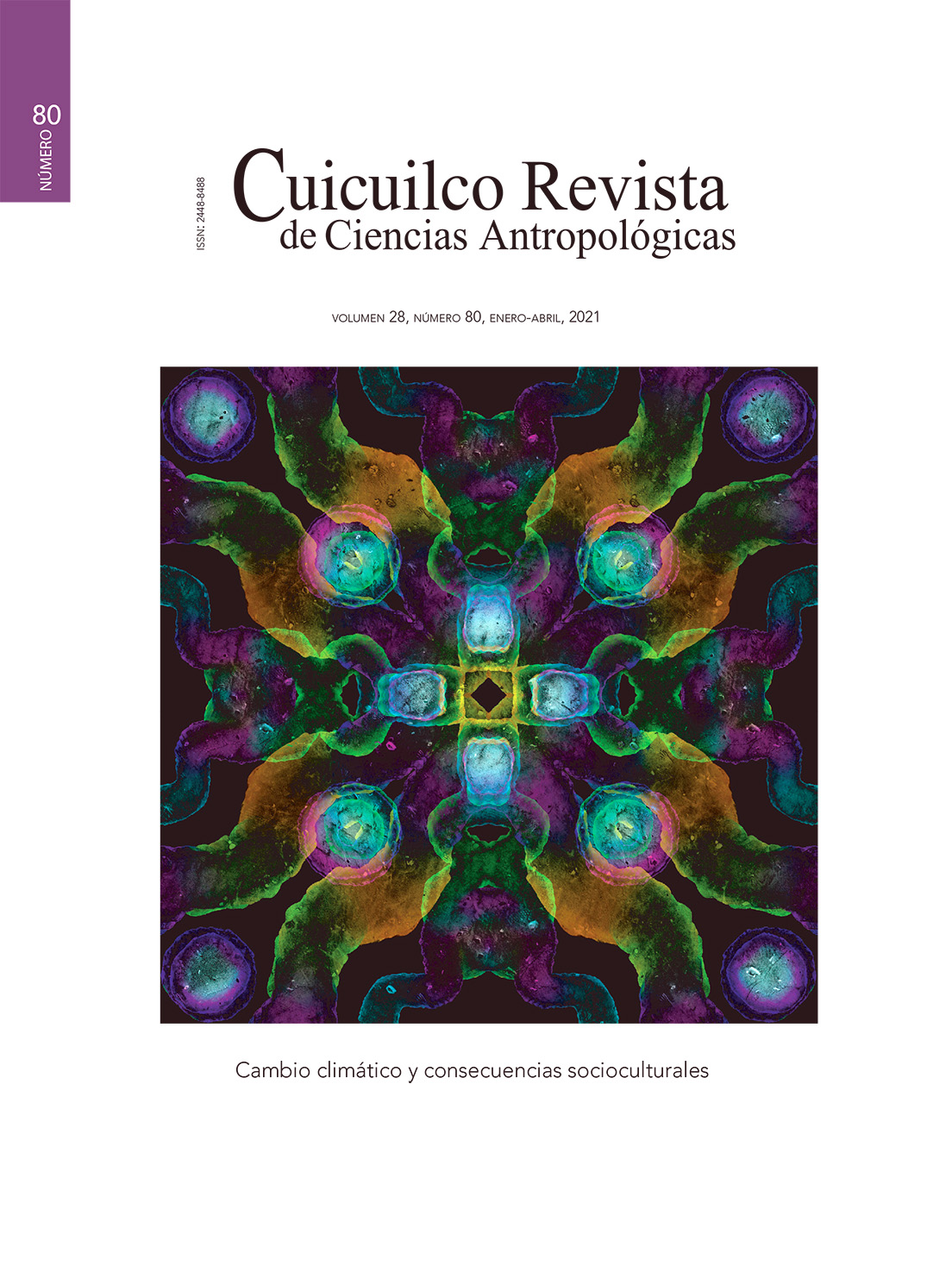Publicado 2021-06-20 — Actualizado el 2022-02-13
Versiones
- 2022-02-13 (3)
- 2021-07-01 (2)
- 2021-06-20 (1)
Palabras clave
- Clovis, Plainview, La Calzada, paleosuelo, paleoambiente
Cómo citar
Resumen
El municipio de Metztitlán, en el noreste del estado de Hidalgo, tiene una extraordinaria diversidad biótica y una gran riqueza de materias primas para la manufactura de herramientas, entre las que sobresalen la obsidiana y el pedernal. Los primeros pobladores, a finales del Pleistoceno, hace unos 13 000 años cal. AP, fueron grupos portadores de tecnología Clovis. Posteriormente, en la transición entre el Pleistoceno y el Holoceno, 11 000 a 10 400 años cal. AP, llegaron grupos de filiación Plainview, quienes poblaron el área de manera más estable. En las cercanías del pueblo de Itztayatla, ubicado a 5 km hacia el norte de Metztitlán, en el sitio de La Calzada se conservan evidencias de ambas épocas: de la etapa Clovis había estaciones de fabricación de puntas en pedernal y de la ocupación Plainview también había un taller de puntas, pero en obsidiana y los restos de un campamento. De ambos momentos tenemos paleosuelos en buen estado de conservación que nos proporcionaron información sobre los cambios de las condiciones ambientales locales entre el Pleistoceno y el Holoceno y sobre otros eventos climáticos posteriores. En este trabajo se resalta la importancia del estudio edafológico para tener una aproximación más fina a las condiciones paleoambientales en el grado de sitio. Además, se señalan estrategias para obtener muestras confiables y se plantea la necesidad de un trabajo conjunto y con metas compartidas entre arqueólogos y edafólogos.
Descargas
Referencias
- Álvarez, Ana Ma. y Gianfranco Cassiano. 2013, Cambios de la estructura tecnológica y del patrón de asentamiento en la transición Pleistoceno-Holoceno, en Cambio climático y procesos culturales. Academia Mexicana de Ciencias Antropológicas. México: 26-49.
- Bever, Michael R. 2012, Enviromental Change and Archaeological Transitions in Early Post-Glacial Alaska, en From Pleistocene to the Holocene. Human Organization and Cultural Transformations in The Prehistoric North America, Bousman y Vierra (eds.). Texas University Press. Estados Unidos: 17-36.
- Bousman, Britt y Bradley Vierra. 2012, Chronology, Enviromental Setting and Views of the Terminal Pleistocene and Early Holocene Cultural Transitions in North America, en From Pleistocene to the Holocene. Human Organization and Cultural Transformations in the Prehistoric North America, Bousman y Vierra (eds.). Texas University Press. Estados Unidos: 9.
- Cassiano, Gianfranco y Ana Ma. Álvarez. 2015, Proyecto La etapa cazadora-recolectora en Veracruz y en México. Informe técnicoparcial 2014-2015. Archivo del Consejo de Arqueología. México.
- Cerling, Thure. 1999, Paleorecords of C4 plants and ecosystems, en C4 plant biology, R.F. Sage, R. K. Monson (eds.). San Diego California USA, Academic Press. Estados Unidos: 445-469.
- Dokucháyev, Vasili. 1967, Selected works of V.V. Dokuchaev, V.I-Russian Chernozem, N. Kaner (trad.). Israel Program of Scietific Translations. Jerusalem.
- Hillesheim, Michael B., David A. Hodell, Barbara W. Leyden et al. 2005, Climate change in Lowland Central America during the late deglacial and early Holocene. Journal of Quaternary Science, 20 (4): 363-376.
- Jenny, Hans. 1941, Factors in Soil Formation. McGraw-Hill. Nueva York.
- Lounejeva, Elena, P. Morales-Puente, H. Cabadas-Báez et al. 2006, Late Pleistocene to Holocene environmental changes from ?13C determinations in soils at Teotihuacan, Mexico. Geofísica International, 45: 85-98.
- Retallack, Gregory Jhon. 2001, Soils of the Past. An Introduction of Paleopedology. Blackwell Science. Oxford.
- Sánchez-Pérez Serafín, Elizabeth Solleiro-Rebolledo, Sergey Sedov et al. 2013, The Black San Pablo Paleosol of the Teotihuacan Valley, Mexico: pedogenesis, fertility, and use in ancient agricultural and urban systems. Geoarchaeology, 28: 249-267.
- Sedov Sergey, Socorro Lozano-García, Elizabeth Solleiro-Reboledo et al. 2010, Tepexpan revisited: a multiple proxy of local environmental changes in relation to human occupation from a lake shore section in Central Mexico. Geomorphology, 122: 309-322.
- Solleiro-Rebolledo Elizabeth, Sedov Sergey, Emily McClung et al. 2006, Spatial variability of environment change in the Teotihuacan Valley during late Quaternary: Paleopedological inferences. Quaternary International, 157: 13-31.
- Stoops, Georges. 2015, Análisis de contextura de la masa basal mineral y los rasgos edáficos del suelo, en Manual de micromorfología de suelos y técnicas complementarias.
- Pascual Bravo. Colombia: 87-153.
- Targulian, Viktor y Sergey Goryachkin. 2004, Soil memory: Types of record, carriers, hierarchy and diversity. Revista Mexicana de Ciencias Geológicas, 21: 1-8.

